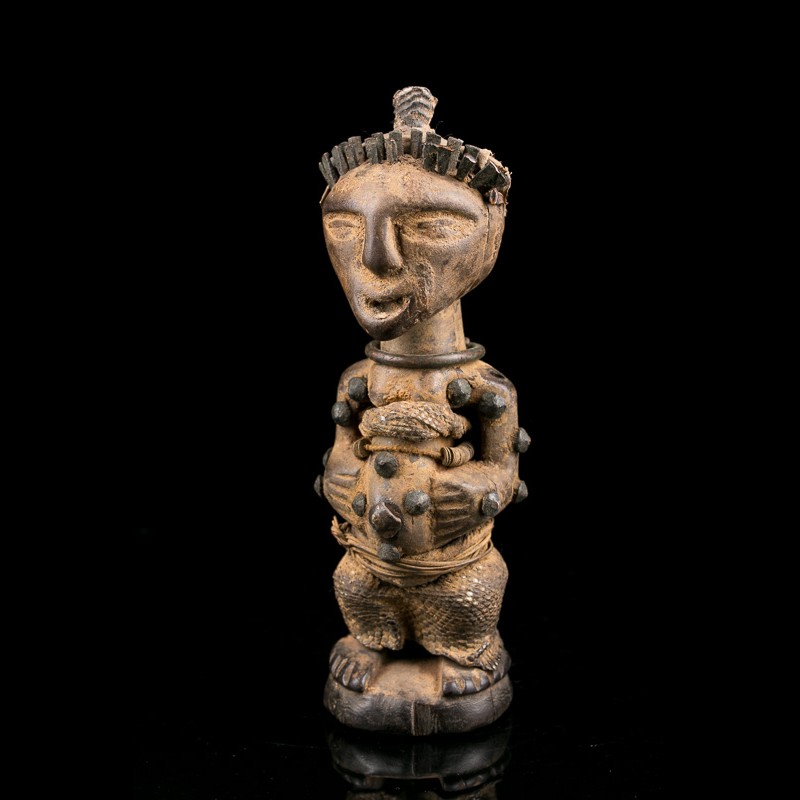


























The Songye form a large tribe which occupies a region located to the west of the Kuna and to the south-east of the Luba, of which they are a branch; they took part in the founding of the Luba kingdom in the 15th century; this no doubt explains the general affinities of the aspect of their art with that of the Luba and the Hemba with regard to the subjects treated: standing figures similar to the large statues of Singiti ancestors of the Hemba, caryatid stools of the Luba and the Hemba.
From a stylistic point of view, the African art Songye is however diametrically opposed to that of the Luba and the Hemba (although certain intermediate styles operate the fusion between them): their statuary especially male, their society being patriarchal, is powerful, charged. of magical substances, lined with nails or metal plates.
These traditional statues are not ancestors like those of the Hemba but fetishes intended for the protection of the villages, the family or the individual as is the case here, depending on their size. Called nkishi or mankishi, these figures are also used for healing and witchcraft.
They are treated in a cubist and geometric way which brings out the power of the volumes. This figurine is a very good example of an individual nkishi still comprising many accessory elements, metal strips, and nails in addition to a loincloth in reptile skin, a top horn and a patina of use.
It comes from the collection of J. Mongu, a distinguished collector from the Democratic Republic of the Congo.
Data sheet
You might also like